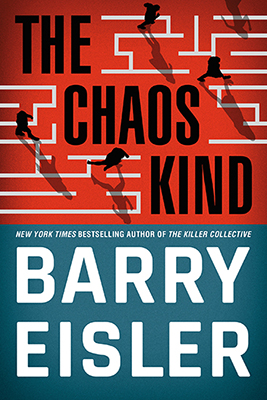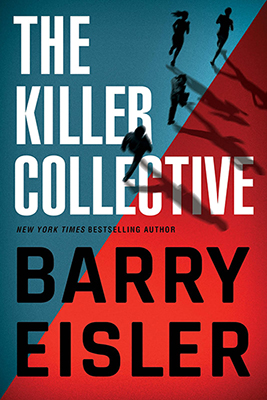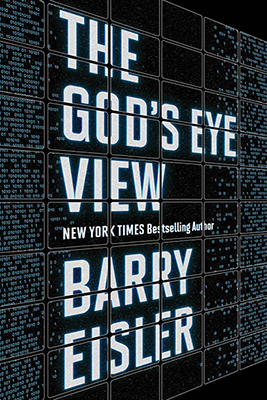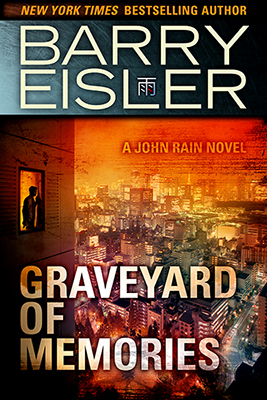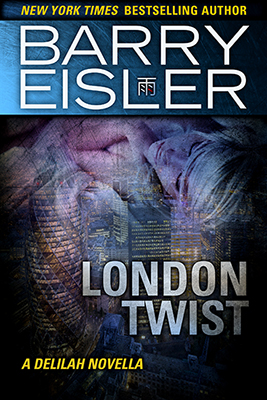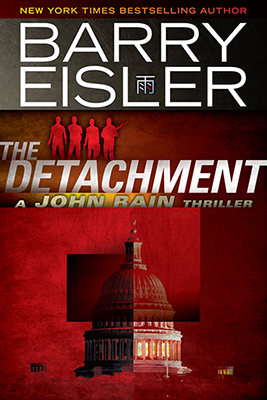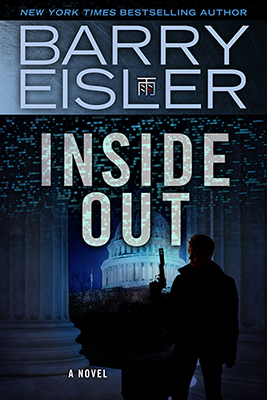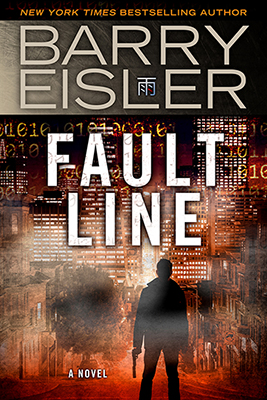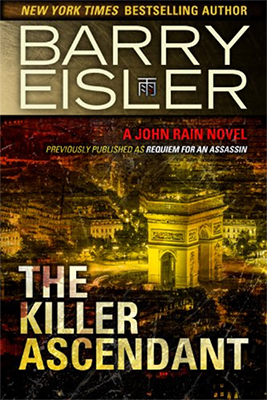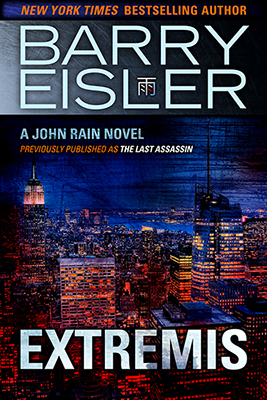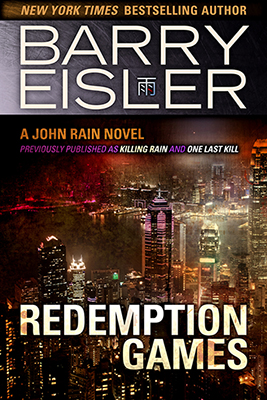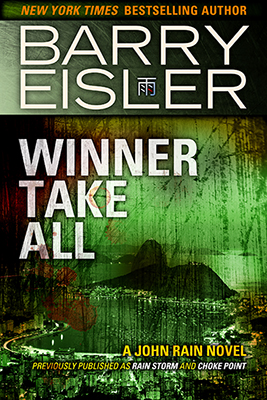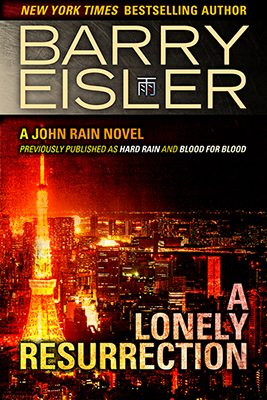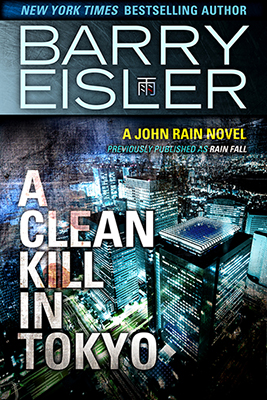Endnotes
Click on a cover or scroll down to read more
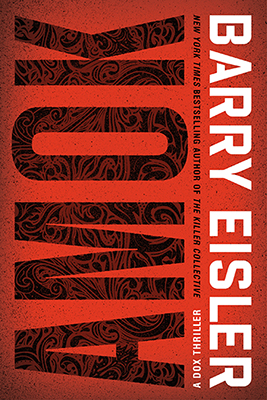
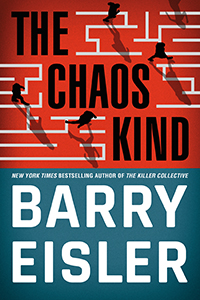

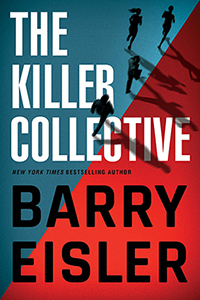

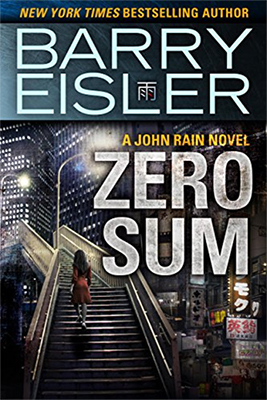

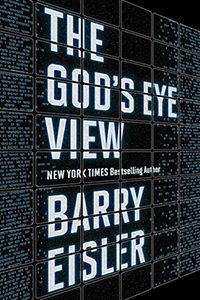
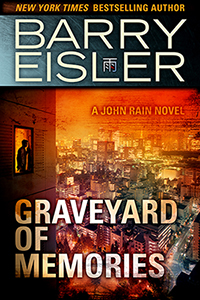
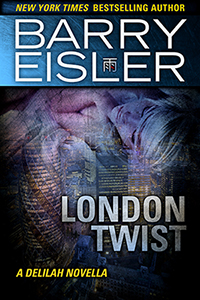
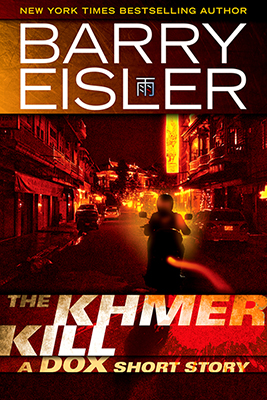
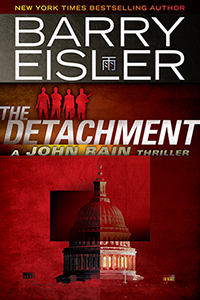
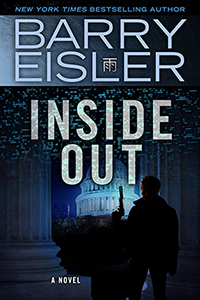
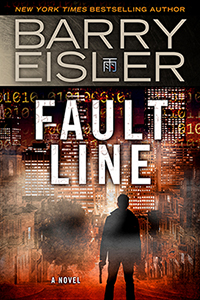
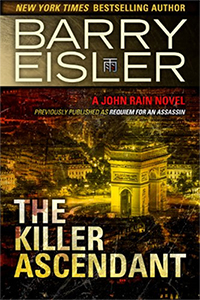
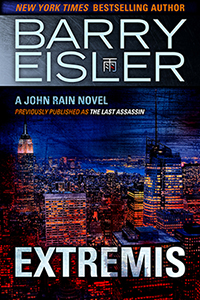
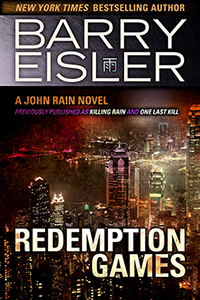
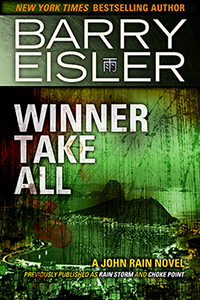

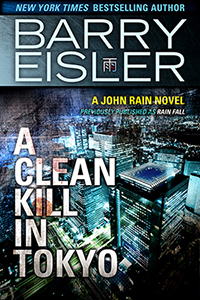
AMOK
Chapter 1
— For more on the freeze and how to break it, I recommend Rory Miller’s Facing Violence: Preparing for the Unexpected (for which I was honored to write the foreword).
Chapter 2
— In addition to Jorge Antonio Renaud’s eye-opening and moving book Behind the Walls and the other books noted in the bibliography below, in trying to understand Roy’s experience in the Huntsville Unit, aka the Walls Unit, I drew on the following:
— A short video on the Texas Field Ministry. I respect the work of the ministry, but I think it’s important to approach the video itself, technically a news broadcast, as a press release issued by the Texas Department of Criminal Justice (no slight to the TDCJ; government officials launder press releases into “news” with the connivance of media partners all the time).
— A short video from a drive around the Huntsville Unit, making plain why the unit is called “the Walls.”
— A video of a scientist examining an unfixed (that is, fresh and not yet preserved in formaldehyde) human brain. If you’re squeamish, you might want to skip this one.
Chapter 4
— I wish I could have visited Marobo Hot Springs for research, but the pandemic has made such things infeasible. Hopefully one day.
Chapter 5
— I first heard of chicken-fried steak in the same year this book is set—from the father of Doug Patteson, one of the gentlemen I thank above for helping me in my depictions of Texas. It was a long time ago, sir, but as you can see I was listening!
Chapter 6
— Though Joko’s sense of smell might seem supernatural, in fact he’s just hyperosmic.
Chapter 7
— Many sports franchises have been changing their names from Native American references. I don’t know about the current status of the Jim Ned High School teams, but in 1991, when this story is set, Jim Ned’s football team was the Indians.
Chapter 9
I’ve never been to Olongapo, but these two articles made me feel like I have:
— LIBERTY CALL: Olongapo City
— Olongapo
— The Purple Sage was inspired in part by Arkey Blue’s Silver Dollar. I badly wanted to visit for research, but Texas is a big place, and I had to concentrate on Abilene and Tuscola. Here’s hoping I’ll be back.
— And if you want to learn to line-dance to “Copperhead Road,” here you go:
— Video 1
— Video 2
Chapter 10
— I don’t know what “proclivities” CIA personnel were instructed to overlook in Afghanistan during Operation Cyclone. But during America’s subsequent war there, US military personnel were ordered to ignore child rape.
— New York Times
— Similar orders for Canadian military personnel in Iraq
Chapter 12
— The notion that eating your enemy, and particularly the heart, is a way to acquire your enemy’s strength is an old one among humans.
— North Sumatra, Joko’s home, has some history of the practice.
That said, I have no reason to believe cannibalism is any more practiced today in Sumatra than it is in Sacramento, and it’s possible Joko was either fabricating the idea, or, more likely, that he believed it because he wanted to believe it, as humans are wont to do.
Chapter 14
— America was no mere bystander to the 1965 Indonesian genocide.
— How America trained the butchers of Timor
Chapter 15
— I first heard False Evidence Appearing Real from Tony Blauer.
— And Fuck Everything and Run is courtesy of Marc MacYoung.
(Not saying these gentlemen invented the terms; I don’t know the origins. But those were the origins for me.)
Chapter 18
— Lots of nonsexual uses for condoms, including substituting for the companion you don’t have!
— And even more uses!
— Building and maintaining an airstrip is tricky business.
— And Dox’s interpretation of Taxi Driver is more fully laid out here.
Chapter 21
— It wasn’t just Indonesia and East Timor. Systematic rape is a widespread weapon of war. For example.
Chapter 23
— Isobel has good instincts about interrogation. But even if you know the tricks, they can be hard to resist when you’re on the wrong end of them.
— Here’s former FBI agent and body language expert Joe Navarro, who I was proud to work alongside lobbying against torture with Human Rights First, breaking down some of the tricks of the trade.
Chapter 24
— I couldn’t find any photos or descriptions of the bar at the old Hotel Turismo, so my depiction is entirely the product of my imagination—the polite way of saying I made it up.
— Fathers crying out of love for and pride in their daughters puts me in mind of Paul and Mira Sorvino at the 1996 Academy Awards.
Chapter 25
— Of course the Soviet atrocities Dox recalls from Afghanistan were real.
— But it would be misleading to suggest that atrocities are confined to wars carried out by our adversaries. The very word atrocity is used almost exclusively to describe what our enemies do; while the results of our own wars are merely regrettable “collateral damage.”
— For more, I recommend Nick Turse’s book Kill Anything That Moves: The Real American War In Vietnam.
— The psychology of atrocity and counter-atrocity.
Chapter 28
— Footage of the November 12, 1991, procession and the Santa Cruz cemetery massacre.
— Amy Goodman, Allan Nairn, and Max Stahl’s account of the massacre, with video.
— More, including the aftermath.
— While taking notes in Shibuya, Tokyo, in 2001 for a scene in the manuscript that became my first book, A Clean Kill in Tokyo (originally Rain Fall), I fell seventeen feet and seven inches at an unmarked construction site, landing on bare concrete. I know the exact height because a month later, I went back with a tape measure. I had horrific bruising on my butt and heels and whiplash, too, but miraculously no permanent injuries (except maybe for some hip problems that started showing up about twelve years later, but who knows). That’s all a long way of saying I know firsthand you can fall that far and if you hit just right still literally walk away from it (well, more like stagger away, gasping and wheezing and groaning).
— Here are videos of two such incidents—the first with someone who was lucky; the second with someone less so. Wouldn’t have guessed that a car can do so much to cushion a fall. Definitely preferable to concrete.
Chapter 31
— How did Dox lift the dead driver so quickly and easily? Here you go.
Chapter 33
— “Agitators must be shot, and they will be.”
Chapter 38
— The aftermath of the Santa Cruz cemetery massacre and how it led to Timorese independence:
— Santa Cruz massacre
— History of East Timor
Chapter 44
— Video of prisoners being released from the Huntsville Unit.
Bibliography
— Bissinger, H. G. Friday Night Lights: A Town, a Team, and a Dream
— Cardoso, Luis. The Crossing: A Story of East Timor
— Dooley, James W. Inside Huntsville Prison
— Mo, Timothy. The Redundancy of Courage
— Renaud, Jorge Antonio. Behind the Walls: A Guide for Families and Friends of Texas Prison Inmates
— Wright, Lawrence. God Save Texas: A Journey into the Soul of the Lone Star State
Filmography
The Act of Killing—an extremely strange film in which the aged killers who carried out the 1965–1966 Indonesian genocide reenact and discuss their crimes.
Balibo—a biopic about the Balibo Five, the Australian, New Zealand, and British journalists killed by Indonesian soldiers on the eve of Indonesia’s 1975 invasion of East Timor (plus a sixth, Australian Roger East, murdered two months later investigating the previous murders).
Beatriz’s War—a Timorese film about the Indonesian occupation.
Max Stahl and Human Rights (each segment about three minutes):
— YouTube (1)
— YouTube (2)
— YouTube (3)
— YouTube (4)
— YouTube (5)
— YouTube (6)
— YouTube (7)
— Tribute to Journalist Max Stahl
The pandemic has impeded my usual practice of visiting the places I write about. In addition to the books and articles I read, the interviews I watched, and the people I talked to, the following videos were helpful in getting an overall feel for Timor. I even tried some civet-selected coffee. Delicious—and glad to report no residual taste from the, er, means of production.
— YouTube (1)
— YouTube (2)
— YouTube (3)
— YouTube (4)
Thanks:
The Legislative Drafting Institute for Child Protection (LDICP)—an organization that does work Isobel would be proud to support.
And a particularly easy and effective way to support the LDICP is through AmazonSmile. It’s simple to sign up and have Amazon donate 0.5 percent of your purchases to the LDICP (or other charity of your choice).
I’ve never been a Marine, but I’m lucky to know a few people who have, and their explanations, stories, and reminiscences were invaluable as I went about writing this book. Dave Beckley, Travis Kelton, James Lucas, and Mike Killman—thank you. The Olongapo tales in particular were so good that they really deserve their own story, and Mike’s contributions regarding Joko’s tracking skills would make a great work of nonfiction.
And to another former Marine, this one Force Recon, and also a CIA Special Operations Group veteran—Dox’s namesake, Carl. You might not remember, my friend, but the first thing you ever said to me was, “Don’t fuck up.” Good advice and I’ve tried to take it to heart.
Though I’ve been all over Texas and spent some time in Abilene and Tuscola researching this book, I’ve never lived in the state. So I’m lucky to count as friends both a transplant—Dave Beckley (one of the former Marines noted above)—and two natives, former Federal Air Marshal Montie Guthrie, who in addition to performing his Texas duties makes sure I’m getting firearms tools and tactics right, and CIA veteran Doug Patteson, who’s also an encyclopedia of clandestine tactics. Thanks to you all for helping this New Jersey native develop a deeper feeling for the great state of Texas.
I should have gotten the names of the kind people in the Tuscola Allsup’s who took the trouble to answer my questions about the town—I would have liked to thank you more personally. Well, if you happen to read this book, at least you’ll know. If anyone wonders how I could have known that the Tuscola Café was formerly Vickie’s, but in Dox’s time, before becoming Vickie’s, was called Lantrip’s, my secret is revealed—it was those friendly Texans at Allsup’s.
My medical training is limited to CPR, so huge thanks to Nurse Practitioner Lindsay Harris, former combat medic Mike Killman, and Dr. Peter Zimetbaum, for making sure I was doing justice to Isobel’s training, instincts, and behavior. And Lindsay, thanks, too, for the winning “a brain feels like an overripe melon” description. 🙂
Thanks to Lurdes Pires, a producer of the film Beatriz’s War, for sharing her memories of and thoughts on the Hotel Turismo, the Santa Cruz cemetery massacre, and all things Timor.
If you want to be a writer, it helps to ask good questions, and once again, no one is better at answering mine than Mike Killman. Mike helps with more aspects of these books than I can reasonably fit in an acknowledgments section, including as noted above military and medical information, everything you ever wanted to know about airfield site surveys, the dos and don’ts of overland travel in a country like Timor, and much more.
It’s not easy to conjure a place that’s remote in both space and time, but there are resources that make it easier. One such is the Facebook page Memories of the Old Hotel Turismo: Dili, Timor-Leste. I’m grateful to Helen Mary Hill, one of the page’s administrators, and to everyone who has taken the trouble to post photos, videos, links, and reminiscences there. Tony Maniaty’s photos of and thoughts about the old Hotel Turismo were particularly helpful.
I listened to a lot of country music while writing the Texas sequences of the book, two soundtracks in particular—George Strait’s Pure Country , and the multiartist album The Thing Called Love . Plus of course a lot of Johnny Cash, Patsy Cline, Merle Haggard, and k. d. lang. Dan Levin, thanks for recommending “Copperhead Road.” Good choice.
To the extent I get violence right in my fiction, I have many great instructors to thank, including Massad Ayoob, Tony Blauer, Alain Burrese, Loren Christensen, Wim Demeere, Dave Grossman, Tim Larkin, Marc MacYoung, Rory Miller, Clint Overland, Peyton Quinn, and Terry Trahan. I highly recommend their books and courses for anyone who wants to be safer in the world, or just to create more realistic violence on the page:
— Massadayoobgroup.com
— Blauerspear.com
— Yourwarriorsedge.com
— Lorenchristensen.com
— Wimsblog.com
— Killology.com
— Targetfocustraining.com
— Nononsenseselfdefense.com
— Chirontraining.com
Thanks as always to the extraordinarily eclectic group of “foodies with a violence problem” who hang out at Marc “Animal” MacYoung and Dianna Gordon MacYoung’s No Nonsense Self-Defense, for good humor, good fellowship, and a ton of insights, particularly regarding the real costs of violence.
Thanks to Naomi Andrews, Wim Demeere, Alan Eisler, Judith Eisler, Ben G., Bart Gellman, Rachael Herbert, Mike Killman, Rebecca Matte, Liz Pearsons, Laura Rennert, Ken Rosenberg, Ted Schlein, Hannah Streetman, and Wanda Z. for terrific feedback on the manuscript. And to Laura also for doing so much to help me write it. I love you, babe.
The Chaos Kind
Prologue
— The Story of Seattle’s Freeway Park
— Manus’s everyday carry—the Cold Steel Espada. Naturally, I bought one for research purposes, and I’m not too proud to admit that the first thing I did with it was screw up and cut myself badly enough to need stitches.
— Manus’s, Evie’s, and Dash’s story is told in The God’s Eye View.
Chapter 2
— How to Not Get Slammed in the Guard
— Marc MacYoung using a cut of meat to demonstrate how much damage a knife can do, at 37:00, but the whole video is worth watching.
— For a discussion of “my weapons don’t work” dreams, where they come from, and how to overcome them, see generally Dave Grossman’s On Killing and Dave Grossman’s and Loren Christensen’s On Combat.
— Livia’s backstory is told in the first Livia book, the eponymous (always looking for an opportunity to use that word) Livia Lone.
Chapter 3
Chapter 4
— The ambush Livia recalls happened in The Killer Collective.
Chapter 5
Chapter 7
— The story of Guardian Angel, called God’s Eye before the government got wise about how to make it sound benign, is told in The God’s Eye View.
— Maya makes her first appearance in The Night Trade.
Chapter 8
— The stepwells of India—photos and more
— So-called “incidental” collection
— Dox and Rain in Brazil (and Hong Kong and Macau) is a story told in Winner Take All.
— Dox’s recollection of those false-flag terror attacks, and how Larison joined their band of brothers, is of course a reference to The Detachment.
—Dox’s original pursuit of the former Khmer Rouge child trafficker Sorm is told in the short story The Khmer Kill.
— And the story of Dox and Livia’s first encounters, in Cambodia and Thailand, is told in The Night Trade.
Chapter 9
— The notorious sumo fight takes place in Extremis.
Chapter 10
— A cool video—the making of a belt knife.
— Dox is understandably phobic about swords due to an incident that occurred in The Night Trade.
Chapter 14
— “But only God can make a tree.”
— An example of an acoustic gunshot detection system.
Chapter 17
— Livia’s teachings on the freeze and how to break it are courtesy of Rory Miller, primarily from Rory’s book Facing Violence: Preparing for the Unexpected (for which I was proud to write the foreword).
Chapter 20
— Camera malfunctions, etc. on the night Jeffrey Epstein died in jail. (Second article)
Chapter 23
— For more on amaeru, the best source I know is Takeo Doi’s The Anatomy of Dependence. As with so many other Japanese concepts, I think it’s a mistake to approach amaeru as a uniquely Eastern thing. It’s probably more a human thing. But it’s also true that as with other aspects of Japanese culture, such as mono no aware, amaeru is relatively important in Japan—important enough to merit nomenclature we in the West lack.
Read more
— For another interesting example of “The West has it, too, it’s just not as central,” consider the Japanese writing system of kanji (a word that literally means “Chinese characters” because Japan adopted the system from China). Kanji are symbols with both sound and meaning. If that sounds confusing, just think of the symbols above the numbers on your keyboard—@, #, $, %, etc. Unlike letters, which have only a sound and no independent meaning, the keyboard symbols have both. And now you understand the fundamentals of kanji! The big difference is that while English has only a few such symbols, peripheral to the writing system, Japanese has thousands, and they are the system’s foundation.
— Delilah and John’s first encounter, when Delilah was with Mossad and Rain was freelancing for the CIA, is in Winner Take All.
— Delilah and John’s breakup is told in the short story “Paris Is a Bitch.”
— And their reunion is part of The Killer Collective.
Chapter 31
Chapter 32
— For a nice cinematic example of a witness check (and a subtle draw), go to 3:55 in the jazz bar scene in Collateral.
— And another nice one (more an Is anyone here going to be trouble? check, but the principle is the same), from this clip of Lonesome Dove, at 0:45.
Chapter 35
— Regarding a “club” of insiders owning and running everything, as usual, George Carlin said it best: “It’s a big club, and you ain’t in it.”
Chapter 38
— The infamous bear joke is told in Extremis. Blame Dox, not me.
Chapter 39
— For “When order is your enemy, chaos is your friend,” Dox is indebted to John Kirakou’s The Reluctant Spy: My Secret Life in the CIA’s War on Terror.
— It’s interesting to speculate whether even satellite hotspots and all the rest would be enough to counter the determined surveillance efforts of a nation-state adversary like NSA. It may be that real-time anonymous electronic communication has become functionally impossible, requiring a resort to slower, old-fashioned methods. If so, note that “impossible” isn’t necessarily the goal; “slow and laborious” might be enough.
Read more
Chapter 42
The story of Jim Hilger rendering Dox is in The Killer Ascendant.
Chapter 47
— As usual, I wish I were inventing Livia’s points about the long-term consequences to victims of having images of their abuse online. But she’s just describing reality.
New York Times (1)
New York Times (2)
New York Times (3)
Chapter 54
— Dox saves the day with Cleavon Little in The Detachment.
Chapter 55
— The humiliation of a three-wheeled motorcycle occurred in The Killer Collective.
Chapter 56
— The crime Livia helped B. D. Little solve is part of All The Devils.
— Dox suffers the indignity of a rear-of-the-seat motorcycle ride in The Night Trade.
Chapter 60
— Andrew Vachss on why transcender is a better term than survivor.
Chapter 64
— For GOT fans—power is power.
Chapter 65
— A bit more on the actual house that inspired the Constantine Grimble compound. (Second article)
Chapter 67
— By serendipity, after finishing the first draft, I came across this photo of Manzanita Way in PUNCH magazine. Definitely conveys the atmosphere.
Chapter 69
— More on the Vaari and Maija Soderholm, one of Livia’s mentors.
Chapter 73
— Abu Ghraib. It’s never the policy, always just “a few bad apples.”
Chapter 76
— I always try to depict things as accurately and compellingly as I can. And when I was writing this chapter, I wanted to listen to a helicopter to help ensure I wasn’t just phoning it in from memory. I found this video with a simple search for “sound of a helicopter.” Sometimes I hate the Internet. But other times I really love it.
Watch now
All The Devils
Prologue
— A brief history of the Salton Sea
— And some haunting photos, too. Careful of the Lost America site—it’ll suck you in.
Katherinebelarmino.com
Lostamerica.com
— Great six-minute documentary film about the Salton Sea
— The 2002 Tony Gayton noir film The Salton Sea is wonderful and surprisingly not well known
Chapter 1
— Some tips on how cops interrogate suspects, and why the deck is stacked against you
Chapter 4
— Signal, the end-to-end encrypted calling and messaging app
Chapter 5
— The old-timer who taught Snake dirty boxing might have been Champ Thomas, who wrote Boxing’s Dirty Tricks and Outlaw Killer Punches.
Chapter 7
— The movie Snake is thinking of is Steve Barancik’s The Last Seduction. Came out in 1994 and hasn’t aged a bit.
— Some thoughts on women’s self-defense that Livia would agree with, from a woman
— What Hope Jordan missed, you can be aware of—by reading Gavin de Becker’s excellent The Gift of Fear: And Other Survival Signals That Protect Us from Violence.
Chapter 8
— Racial disparities in media coverage of, and law enforcement resources devoted to, child abductions
— Names change; programs continue
Chapter 10
Chapter 16
— The relentless miniaturization of drones
— “The US Army Is Equipping Soldiers with Pocket-Sized Recon Drones”
— Yes, the US government really does call assassinations “dispositions” (for when even “targeted killings” is just too gauche). When Kanezaki explained to Rain in Winner Take All—all the way back in 2004—that the government called its assassination list the “International Terrorist Threat Matrix,” he was pretty close to the actual, subsequently revealed “Disposition Matrix” terminology. To paraphrase H. L. Mencken, no one ever went broke underestimating the euphemisms of the US government.
— Kanezaki would neither confirm nor deny the existence of insect-sized drones. But…
Chapter 18
— The Ukrainian journalist who handled death threats by faking his own death
— “Decorated Navy SEAL Is Accused of War Crimes in Iraq”
— Shining a spotlight on rape in war
Chapter 20
It’s not just Livia who’s rolled with Dave Camarillo and Rene Dreifuss—it’s her author as well. Two outstanding teachers and technicians.
Chapter 24
— More on victimology, modus operandi, and signature aspects of serial crimes
— “Justice was her vehicle, and hate was the fuel it ran on” is yet another aspect of Livia inspired by child advocate and novelist Andrew Vachss
Chapter 29
— I didn’t get to visit Sherrie Dobbs’s and her husband’s bakery when I was in Kanab, but the Kanab Creek Bakery is one of the best I’ve ever been to.
Chapter 32
Chapter 36
— Humiliating a victim as both signature and disincentive for the victim to come forward
— Tormenting a victim by contacting her afterward (second article). I wish I were inventing these things for the story. I’m not.
— Victims sometimes recant true allegations
— “Today, a $3 million satellite that weighs less than 10 pounds can capture significantly sharper images than a $300 million, 900-pound satellite built in the late 1990s . . . What began with satellite cameras is rapidly expanding to infrared sensors that detect heat; ‘hyperspectral’ sensors that identify minerals, vegetation and other materials; and radar scanners that can build three-dimensional images of the landscape below.”
Read more
— Charles Bukowski’s poem “Dinosauria, We,” which makes me think of the Salton Sea. Beware, it’s a little depressing.
— See also this haunting passage from H. G. Wells’s The Time Machine
Chapter 40
— This is just a fraction of the ways the government can monitor cellphones
Chapter 44
— It’s a good thing Livia has trained with Dave Camarillo, because that’s where she learned flying omoplata. For this and much more, see Dave’s excellent book Guerrilla Jiu-Jitsu: Revolutionizing Brazilian Jiu-Jitsu, a must for any serious grappler.
The Killer Collective
Chapter 1
— A beautiful video requiem about the rebirth of a minka—a traditional Japanese farmhouse like Rain’s—and the love behind it.
Chapter 2
—Article on the real-world operation that’s the basis for Livia’s sting: “Australian Police Sting Brings Down Paedophile Forum on Dark Web”
— For more on the power of mirroring
— More on cognitive dissonance
Chapter 5
— Rain’s reference to who, where, and how much is courtesy of Max von Sydow’s Joubert, from Three Days of the Condor. “I don’t interest myself in why. I think more often in terms of when. Sometimes where. Always how much.”
Chapter 6
— The “hurtcore” subculture Livia describes is real, “‘Sadistic’ Paedophile Matthew Falder Jailed for 32 Years”
Chapter 8
Chapter 9
— The adrenal stress training Livia puts her students through, including verbal intimidation and escalation, is modeled after Peyton Quinn’s Rocky Mountain Combat Applications course. I highly recommend it.
— If you want to be safer in the world, reading Gavin de Becker’s The Gift of Fear: Survival Signals That Protect Us from Violence is an exceptionally cost-effective measure.
Chapter 10
Chapter 11
— While I was casting about for a good name for the front-runner presidential candidate, I happened to listen to this wonderful Intercepted podcast episode—“Evening at the Talk House.” One of the characters was named Walter Barkley, and it felt perfect, so I borrowed it.
Chapter 15
— A video of the tunnel El Chapo Guzmán used to escape from a Mexican maximum-security prison.
— George Carlin on the slightly nonintuitive concept of the “near-miss”
Chapter 44
— The radio frequency vehicle stopper is real, “The Pentagon Wants to Stop Marauding Vehicles with High-Powered Microwave Beams”
Chapter 51
— If you were thinking I made up the idea of a mercenary corporation pitching the government to privatize a war . . . I didn’t, “Erik Prince’s Plan to Privatize the War in Afghanistan”
— “Trump White House Weighing Plans for Private Spies to Counter ‘Deep State’ Enemies”
— More instances of the Pentagon using off-the-book contractors to track and kill enemies:
“Contractors Tied to Effort to Track and Kill Militants”
“CIA Sought Blackwater’s Help to Kill Jihadists”
— NSA collects Tor and VPN traffic on hundreds of thousands of Americans each day, “The Senate Intelligence Committee 702 Bill Is a Domestic Spying Bill”
— FBI efforts to hack Tor, “The Tor Teardown, Brought to You by Goats, Giraffes, and Thor’s Hammer”
Chapter 53
Some background on “parallel construction,” “Parallel Construction Revealed: How the DEA Is Trained to Launder Classified Surveillance Info”
Acknowledgments
Thanks to the Legislative Drafting Institute for Child Protection—an organization that does work Livia would be proud of, and that deserves your support.
Thanks to Michael Devine, Seattle Police Department, who opened the door for me with SPD interviews and ride-alongs, and who continues to patiently answer all my cop-related questions.
Thanks to Lori Kupfer, who knows Delilah and her moves better than I do.
Thanks to Micah F. Lee of The Intercept for giving me a primer on encryption and anonymization apps. Anything I managed to get wrong anyway is despite Micah’s efforts.
Thanks to “FOIA Terrorist” Jason Leopold, who got me thinking in the right direction about the Secret Service and the Justice Department.
Thanks to Wim Demeere for helping me get the unarmed-combat sequences right. Of course, this means when I get anything wrong, it’s Wim’s fault.
To the extent I get violence right in my fiction, I have many great instructors to thank, including Massad Ayoob, Tony Blauer, Alain Burrese, Loren Christensen, Wim Demeere, Dave Grossman, Tim Larkin, Marc MacYoung, Rory Miller, Clint Overland, Peyton Quinn, and Terry Trahan. I highly recommend their superb books and courses for anyone who wants to be safer in the world, or just to create more realistic violence on the page.
Thanks as always to the extraordinarily eclectic group of “foodies with a violence problem” who hang out at Marc “Animal” MacYoung and Dianna Gordon MacYoung’s No Nonsense Self-Defense, for good humor, good fellowship, and a ton of insights, particularly regarding the real costs of violence.
Thanks to Naomi Andrews, Jacque Ben-Zekry, Phyllis DeBlanche, Grace Doyle, Alan Eisler, Emma Eisler, Bart Gellman, Brad Handler, Meredith Jacobson, Dan Levin, Genevieve Nine, Matt Powers, Laura Rennert, and Paige Terlip for helpful comments on the manuscript. Special thanks once again to Mike Killman for never letting me get lazy about creating action scenes that are both dramatic and tactically correct, and for his fascinating, discursive editorial comments generally.
Most of all, thanks to my wife and literary agent, Laura Rennert, for being such an amazing daily collaborator and otherwise doing so much to make these books better in every way. For anyone else grateful for the increased pace of my writing, Laura’s the one we owe it to. Thanks, babe, for everything.
Bibliography
— Matsuo Bashō’s The Narrow Road to Oku (translated by Donald Keene and illustrated by Miyata Masayuki)
— John Roderick’s Minka: My Farmhouse in Japan
— Yoshihiro Takishita’s Japanese Country Style: Putting New Life Into Old Houses
— Robert Young Pelton’s Licensed to Kill: Hired Guns in the War on Terror
— Jeremy Scahill’s Blackwater: The Rise of the World’s Most Powerful Mercenary Army
The Night Trade
Author’s Note
I made a few changes in the surroundings of the Srinakarin Rot Fai Night Market, chiefly placing a gas station and junkyard in the empty lot south of Sanam Golf Alley. Otherwise, the locations in this book are depicted, as always, as I found them.
Chapter 1
— Livia’s thoughts on how if you walk up and say a person’s full name three times, the person can’t help but smile are, if I remember correctly, from Dale Carnegie’s How to Win Friends and Influence People. In my experience, Carnegie was right.
Chapter 3
— For more on the concept of “forced teaming,” I recommend Gavin de Becker’s The Gift of Fear.
— “The answer is always no if you don’t ask” is wisdom courtesy of Madeline Duva.
Chapter 9
— It’s possible Livia’s use of a cell-phone tracking device in Thailand wouldn’t be technically feasible. It’s hard to know, because Harris Corporation insists on draconian confidentiality agreements with the law-enforcement agencies that purchase its cell-phone monitoring products. Regardless, if it’s not feasible today, it will be tomorrow.
Chapter 11
—Livia is right to be concerned about Agent Little monitoring her cell phone:
“Cellphone Data Spying: It’s Not Just the NSA”
“This Is How Often Your Phone Company Hands Data Over to Law Enforcement”
“The Problem with Mobile Phones”
Chapter 12
— I stumbled across the airplane graveyard on a wonderful website called Renegade Travels. The Penis Shrine and Chinese Cemetery were also tempting locations, but in the end the airplanes won out.
Chapter 13
— Beating thermal imaging is hard but not impossible, and I’m grateful to two former marines, David Rosa and Luisito Sugatan, for showing Livia how (though I won’t deny, a bit of luck was with her, as well).
Chapter 14
— Integrated image intensification and infrared isn’t widespread, but it’s coming.
Chapter 16
— A bit about the Naval Special Warfare Cold Weather Detachment training on Kodiak Island, Alaska, that Dox mentions. You can see why he was so fond of it.
Chapter 26
Chapter 29
—If you think CIA complicity in drug trafficking is a conspiracy theory, this History Channel documentary will be eye opening.
— Don’t miss this Jeremy Scahill interview with historian Alfred McCoy, author of The Politics of Heroin: CIA Complicity in the Global Drug Trade.
Zero Sum
Chapter 3
— For more on the two percent of soldiers the US government considered “aggressive psychopaths” in World War II, I recommend Lt. Col. Dave Grossman’s On Killing: The Psychological Cost of Learning to Kill in War and Society.
— Rain’s thoughts on how recognizing something is dangerous automatically makes it less so are courtesy of Marc MacYoung.
— For a conversation between Rain and MacYoung on violence, personal security, and tradecraft, along with a few other tales about life out at the edges, I recommend Campfire Tales from Hell.
Chapter 5
— It seems that recently, love hotels are being increasingly promoted and used for activities not strictly amorous. Obviously, Rain has been all over the additional benefits for decades.
Chapter 6
— The quote Rain refers to is from Reinhold Niebuhr’s Moral Man and Immoral Society, where Niebuhr writes, “Self deception . . . is the tribute which morality pays to immorality; or rather the device by which the lesser self gains the consent of the larger self to indulge in impulses and ventures which the rational self can approve only when they are disguised.”
— Treasures of Azuchi Castle and Nijo Castle was a 2016 exhibit at the Tokyo National Museum. I hope I can be forgiven for moving it back in time a bit.
Chapter 8
— Some of my favorite izakaya are the really old-school, under-the-tracks variety. Here’s a nice photo blog of Yūrakuchō, home to some great ones.
Chapter 9
— One of Tokyo’s best bars (which is saying a lot), Bar Radio has been through several incarnations since its 1972 debut. I described it as it appears today—which works in a story set in 1982 because the bar is timeless. If you’re in Tokyo, visit and see for yourself.
Chapter 10
— Here’s a good photo of the street in Shibuya were Rain gets ambushed—a part of town called Hyakkendana. I post my research photos on my website, but this one’s better quality and really nails the nighttime feel of the area.
— For more about the Church and Pike Committees and the assassination, domestic sabotage, and human experimentation programs they uncovered, Wikipedia offers a good primer. Fortunately, these sorts of abuses are ancient history and could never, ever happen now.
— More on Project Gamma and “the Green Beret Affair”—the “termination with extreme prejudice” of a suspected South Vietnamese double agent by US Special Forces in Vietnam.
— You can’t take the kind of urban-ops course “Mike” mentions to Rain as the source of his ability to blend in Tokyo. But here’s one you can take, and it’s at least as good—Violence Dynamics.
Chapter 11
— The intelligence adage, First, tell me what you know. Then tell me what you don’t know. Now tell me what you think, is courtesy of a man called Slugg, whose untimely death early this year is an immeasurable loss for everyone who knew and learned from him.
Chapter 15
— The programs Tatsu describes—Operation Paperclip, Operation Gladio, Operation Mongoose, Operation Chaos, Project FUBELT, and MKUltra—and others like them, all really happened. Google the names and see. Of course, the government would never, ever engage in such activities today.
— For more on the history of soapland, I recommend Nicholas Bornoff’s wonderful book, Pink Samurai: Love, Marriage and Sex in Contemporary Japan.
— Here’s a great article from longtime Tokyo resident and Japan Times reporter Mark Schreiber on Yoshiwara then and now.
Chapter 16
— An interesting video on Kevlar’s effectiveness against knives.
Chapter 18
— Tokyo’s famous Imperial Hotel—repeatedly damaged, destroyed, torn down, and rebuilt—has an incredible history, including opening on the day of the Great Kanto Quake of 1923—and surviving it, though not unscathed.
— More on CIA stockpiling of shellfish toxin, cobra venom, and other poisons.
— The CIA had a heart-attack dart gun, too. Because it’s the government, they called it a “nondiscernible microbioinoculator.”
Acknowledgments
Thanks to Koichiro Fukasawa and Yukie Kito, who yet again were invaluable in answering my questions about all things Tokyo and Japan: new and old; native and foreign; cultured and gehin.
Thanks to Michael Kleindl of Tokyo Food Life, who introduced me to Bar Radio and quite a few other Tokyo standouts, as well.
Any shortcomings in the judo Rain uses in the subway struggle are entirely the fault of Tom Schinaman—a great judoka, jiu-jitsuka, and teacher—who helped me choreograph the scene one memorable night in Tokyo. J
To the extent I get violence right in my fiction, I have many great instructors to thank, including Massad Ayoob, Tony Blauer, Wim Demeere, Dave Grossman, Tim Larkin, Marc MacYoung, Rory Miller, and Peyton Quinn. I highly recommend their superb books and courses for anyone who wants to be safer in the world, or just to create more realistic violence on the page:
Thanks as always to the extraordinarily eclectic group of “foodies with a violence problem” who hang out at Marc “Animal” MacYoung and Dianna Gordon MacYoung’s No Nonsense Self-Defense, for good humor, good fellowship, and a ton of insights, particularly regarding the real costs of violence:
I like to listen to music while I write, and sometimes a certain band or album gets especially associated with what I’m working on. This time around, the band was Godspeed You Black Emperor! and the album F♯ A♯ ∞.
Thanks to Jacque Ben-Zekry, Blake Crouch, Gracie Doyle, Meredith Jacobson, Mike Killman, Lori Kupfer, Dan Levin, Genevieve Nine, Laura Rennert, Michael S., and Ted Schlein for helpful comments on the manuscript.
Most of all, thanks to my wife and literary agent, Laura Rennert, for doing so much to make these books better in every way. Thanks, babe, for everything.
Livia Lone
Chapter 1
— Why does Billy Barnett assume he can get away with raping a woman he met and chatted with in a bar?
— If you’re curious about Livia’s deployment of a jiu-jitsu triangle choke (in judo called sankaku-jime), Bas Rutten has a nice demonstration of the fundamentals here.
— The page-by-page description starting on page 124 of Brazilian Jiu-Jitsu: Theory and Technique, by Renzo and Royler Gracie, John Danaher, and Kid Peligro, is also great.
Chapter 5
— “This Life in Ruins”—love this photo collection of derelict Georgetown.
— These videos of huge objects being run through metal shredders are weirdly addicting. Or maybe the weirdness is just me. But still.
Chapter 10
— Though Seattle PD was kind enough to give me a tour of their headquarters, I’ve taken a few novelistic liberties with my description of the layout of the building and the processes involved with checkout of equipment, creating something that’s more a composite of various police departments than something specific to SPD itself.
— The Montlake rape/murder is based on an actual case. I am in awe of the bravery of Jennifer Hopper, the survivor, and of her murdered partner, Teresa Butz. And of the dedication of SPD Homicide Detective Dana Duffy.
Read more
Chapter 13
— Here’s what happens to a cell phone (or, presumably, a Gossamer) in a fight with a hydraulic press.
Chapter 26
Chapter 36
— Here’s a good video primer on the cross-collar choke Livia uses with lethal effect. I’ve done it, and had it done to me, many times, and it’s as effective on the mat as it is for Livia. If you want to argue that Livia probably wouldn’t be able to look her attacker in the eyes while she did this choke, in general I’d agree. But I’m glad she managed it anyway.
Chapter 42
— Rick’s recollection of the woman who thanked him years later for saving her life when she was a little girl is based on something that happened to SPD Homicide Detective Dana Duffy, who I was honored to interview while writing this book. Made this hard-boiled thriller writer cry.
Chapter 46
Chapter 47
Chapter 55
— This will give you an idea about how much information cops can access about citizens.
— It’s possible Livia’s access to and use of SPD cell phone tracking devices is beyond what the average detective could get away with. It’s also possible her use of such a device in Bangkok wouldn’t be technically feasible. It’s hard to know the answer to the first because Harris Corporation insists on draconian confidentiality agreements with the law enforcement agencies that purchase its cell phone monitoring products. As to the second, if it’s not feasible today, it will be tomorrow.
Read more
Read more (2)
Chapter 61
—The concept of something becoming less dangerous just by your recognizing it’s dangerous—and the opposite—is courtesy of Marc MacYoung.
Sources
Robert Christensen’s Out of the Darkness and into the Blue: Surprising Secrets, Tactics, and Training Concepts: A Memoir from One of Kalamazoo’s Top Cops
— Miles Corwin’s The Killing Season: A Summer inside an LAPD Homicide Division
— Patrick Radden Keefe’s The Snakehead: An Epic Tale of the Chinatown Underworld and the American Dream
— Lee Lofland’s Police Procedure & Investigation: A Guide for Writers
— Moisés Naím’s Illicit: How Smugglers, Traffickers, and Copycats Are Hijacking the Global Economy
—Steve Osborne’s The Job: True Tales from the Life of a New York City Cop (and for God’s sake, if you like audiobooks, listen to Osborne read this one in that tailor-made New York accent!)
— Adam Plantinga’s 400 Things Cops Know: Street-Smart Lessons from a Veteran Patrolman
— David Simon’s Homicide: A Year on the Killing Streets
— Maija Soderholm’s The Liar the Cheat and the Thief: Deception and the Art of Sword Play
— Randy Sutton’s True Blue: Police Stories by Those Who Have Lived Them
— Alice Vachss’s Sex Crimes: Ten Years on the Front Lines Prosecuting Rapists and Confronting Their Collaborators
Acknowledgments
Police work is less familiar terrain for me than espionage, and I did a fair amount of research while preparing to write this book. I’m deeply grateful to the following officers of the Seattle Police Department, not just for their time and generosity, but for the work they do, the risks they take, and the costs they bear on behalf of the public:
Clay Agate; Megan Bruneau; Dana Duffy; Mike Freese (more on Mike below); Diana Freese; Michael Devine; Alvin “Big Daddy” Little; Suzanne M. Moore; Donna Strangeland; and Lauren Truscott.
I have to share an anecdote here. On a late-night ride-along, Mike Freese asked if I might want to see Seattle’s “Jungle”—the sprawling area under Interstate 5 and various other overpasses, occupied by homeless, transients, and other trackless people. I told him I did. We stopped, got out, and went through a hole in the fence. Mike was careful to shine his flashlight at the ground, and as I came through the hole after him, he raised his finger to his lips and pointed at a sleeping bag under a tarp. “Shhh,” he whispered. “People are sleeping.”
As I prepped for this book, I asked a lot of cops what they thought was the top quality in a good officer. The most frequent response was, “Compassion.” That moment in the Jungle was a demonstration of it.
A few other cops I want to thank for their time and generosity:
Loren Christensen, former army MP and Portland cop, who knows a thing or two about martial arts and self-defense, as well.
Montie Guthrie, former Texas cop and federal air marshal, who for years has given me great feedback on everything about firearms and more despite being traumatized by the love scenes.
Randy Sutton, former Las Vegas PD officer, who made the call that got things rolling for me with SPD, and who possesses a wealth of knowledge about police work. Plus his books are great and damn you, Randy, your stories always make me cry.
John Vanek, former San Jose PD officer. I highly recommend John’s book, The Essential Abolitionist: What You Need to Know about Human Trafficking & Modern Slavery. It’s just what the title says, and along with John was an invaluable resource for writing this novel.
Thanks also to Gloria Fichou, former DHS Homeland Security Investigations; Andrew Huang, Assistant US Attorney; Mary Petrie, former San Francisco PD; and Daniel Velez, Assistant US Attorney, for terrific background on law enforcement work against human trafficking.
Thanks to Prasong Taja, for being the best Chiang Rai guide a writer could ever ask for.
Thanks to Xeni Jardin, for her insights into the psychological consequences of childhood abuse.
Thanks to Emma Eisler for her amazing insights into, and patient explanations regarding, the inner world of teenage girls.
Thanks to Maya Levin, for telling me a true story about Sean Uenoyama, and thereby inspiring the character named after him.
Thanks to Tony Bartholomew of SF Moto, who took time out of a busy morning to patiently and enthusiastically answer all my questions about motorcycles and riding.
Thanks to Justin Bell and the other staff at TechShop for answering my somewhat unusual questions about metal shredders, oxyacetylene torches, and hydraulic presses, and for showing me the equipment in action.
No one knows more about the evils of child abuse than novelist and protector of children Andrew Vachss, and the hours he generously spent talking to me about Livia’s origins and character were a master class in close listening, informed insights, and terrific ideas. He corrected what I was getting wrong, made me more conscious of what I was getting right, and shared two great concepts that Livia wound up borrowing: that behavior is the truth; and what isn’t a weapon is a weakness.
Livia’s firearms skills are courtesy of Massad Ayoob, who I’ve been privileged to train with.
More about Maija Soderholm and the Vaari knife here. The Vaari wasn’t around when Livia was in high school, but hopefully I can be forgiven for transporting it back in time a bit.
Sometimes I wind up listening to a certain album a lot while working on a book. This time around it was Ray LaMontagne’s Ouroboros.
Thanks to Rex Bonomelli for another knockout cover.
Thanks to Naomi Andrews, Daniel Born, Wim Demeere, Grace Doyle, Alan Eisler, Emma Eisler, Judith Eisler, Montie Guthrie, Mike Killman, Lori Kupfer, Dan Levin, Maya Levin, Genevieve Nine, Laura Rennert, Ken Rosenberg, Johanna Rosenbohm, Jennifer Soloway, and Alice Vachss, for helpful feedback on the manuscript.
Most of all, thanks as always to my wife Laura Rennert, who’s also my literary agent and a great editor and collaborator. Even more than the characters in previous books, Livia Lone was a joint effort. Thank you, babe, for everything.
The God’s Eye View
I couldn’t have written this book without the benefit of what the public has learned from whistleblower Edward Snowden. Though if I had written it before Snowden’s revelations, I’m confident substantial portions would have sounded like tinfoil-hatted crazy talk.
What we know instead is that most of what I’ve described in these pages is real. And while God’s Eye itself is speculative, anyone familiar with the record of J. Edgar Hoover, the history of COINTELPRO, the allegations of NSA analyst Russell Tice, or the workings of human nature generally will know that even God’s Eye is unlikely to be entirely imaginary.
That said, I know here and there I’ve taken some minor institutional and technical liberties, mostly in the service of moving the plot along more crisply. Apologies for this to the experts (thanked below) who were kind enough to read and correct the manuscript before publication. As for the unintentional errors I’m sure I’ve made despite a fair amount of research and fact-checking, I’ll look forward to hearing from readers, and to posting corrections here.
For more on the facts behind my fiction, I recommend the following:
Prologue
— “13 Ways the NSA Has Spied on Us”
— One of the NSA’s least known and most potent surveillance tools: EO 12333
— The false and propagandistic notion of an American “oath” of secrecy
— How an undersea oil eruption became a “leak”
— “Enhanced Interrogation” sounds better in the original German
— 1.2 million people on US government watch list
Chapter 1
— US/Turkish intelligence cooperation
— More on NSA Special Liaison Advisors
— Mesh network CCTV surveillance systems are trivial to hack
— Harvard secretly installs cameras in its classrooms
— Gunshot-detecting microphones
— Identifying people via biometric data like height, stride length, and walking speed
— “New Surveillance Technology Can Track Everyone in an Area for Several Hours at a Time”
Chapter 2
— Intelligence agencies achieve greater openness by prohibiting officials from talking to media
Those damn subversives the director is so upset about:
— How the NSA tracks cell phone locations
Chapter 6
— United Nations Special Rapporteur on Torture finds Chelsea Manning’s treatment cruel and inhuman
— Yemenis seek justice in wedding drone strike
— The best coverage of America’s drone wars ever is courtesy of comedian John Oliver
— Detaining someone assisting in journalism under the pretext of antiterrorism
Hacking a car and turning it into a drone:
— Airplanes are vulnerable to cyberhacking, too
— Everything in a high-end car is microprocessor-controlled—even the steering
— Hertz puts cameras inside some of its rental cars
Chapter 7
— It’s possible Manus has seen this video on concealing a handgun inside a vehicle
Chapter 8
— How Western media is manipulated by ISIS into spreading jihadist propaganda
Chapter 9
— Pakistani government forces cell phone users to turn over fingerprints or lose their service
Chapter 10
— ACLU rendition of just how powerful a tool location data can be
— “We Kill People Based on Metadata”
Chapter 11
— ISIS waterboarded journalist James Foley
Chapter 12
— Secret FISA “court” is nothing but an administrative rubber stamp
— FISA “court” approves 99.97 percent of government surveillance requests
Chapter 13
— Journalists relying on face-to-face meetings and human couriers
— NSA intercepts shipments of Internet-ordered computers; infects them with malware
— “Secret Documents Reveal NSA Campaign Against Encryption”
— “A Few Thoughts on Cryptographic Engineering”
— Over 700,000,000 people changing their online behavior to evade NSA surveillance
— US Postal Service logs all mail for law enforcement
Chapter 14
— Over 1.5 million people with top secret clearances (more than the population of Norway)
Chapter 16
— “New Hi-Tech Police Surveillance: The ‘StingRay’ Cell Phone Spying Device”
Chapter 17
— NSA’s AURORAGOLD cell phone eavesdropping and encryption subversion program
Chapter 18
— And other existing and coming means of peering through brick and concrete
Chapter 20
— Mobile IMSI-catcher cell phone trackers
Chapter 22
— Pakistani government forces cell phone users to turn over fingerprints or lose their service
Chapter 23
— No one uses words like “homeland” accidentally
— http://www.huffingtonpost.com
— “US Military Drone Network in the Middle East and Africa”
— US automatically counts all military-age males killed as terrorists
— ISIS claims US hostage killed in coalition air strike in Syria
— Wolf Blitzer is a particularly compliant tool
— Establishment “journalists” detest whistleblowers
— The surveillance state never stops looking for excuses to increase its powers
— “Former FBI Assistant Director: To Keep Budgets High, We Must ‘Keep Fear Alive'”
Chapter 24
— TED talk by Trevor Aaronson on how the FBI’s tactics create domestic terrorists
— To get what you want it’s good to “scare hell” out of the American people
— New eavesdropping equipment sucks all the data off your cell phone
Chapter 25
— “A Decade After 9/11, Police Departments Are Increasingly Militarized”
— More on domestic surveillance aircraft
— This ACLU domestic drone “nightmare scenario” from 2012 doesn’t sound so far-fetched now, does it?
— More on the NSA spying on journalists
Chapter 26
— More on what happened to every NSA whistleblower who tried to work through the system can be found in chapter 9 of James Risen’s excellent book, Pay Any Price: Greed, Power, and Endless War (New York: Houghton Mifflin Harcourt, 2014)
— More on Jesselyn Radack, whistleblower and lawyer to whistleblowers
— And Diane Roark and Thomas Tamm, who also tried to go through the system
— pbs.org
Chapter 27
— Peyton Quinn’s Five Rules for Managing Impending Violence
Chapter 28
— HUMINT, SIGINT . . . and now, LOVEINT
Chapter 31
— Using license plate trackers to monitor gun shows . . . and what else?
— The NSA targets the privacy conscious
— XKeyscore: NSA’s Google for the World’s Private Communications
— How the FBI caught Petraeus: cross-referencing metadata, all without a warrant
— Don’t worry; it’s just metadata!
— The CIA intercepts whistleblower communications
Chapter 32
— How to leak securely using SecureDrop
Chapter 41
— CIA director’s attempt to conceal emails by saving them as drafts, not sending
— If you’re using encryption, the NSA is watching extra closely
— Lawyer-client privileged communications are of particular interest
— Governments monitor WikiLeaks website, collect IP addresses of visitors
— Thinking about searching for privacy-enhancing tools? The NSA is watching for that
— “Surveillance Forces Journalists to Think and Act Like Spies”
— Another example of God’s Eye-type pattern recognition: the NSA’s SKYNET program
Chapter 45
— New exploit turns Samsung Galaxy phones into remote bugging devices
— Using a cell phone’s gyroscopes like a microphone
— The $2.8 billion JLENS blimps floating over Maryland
— The CIA/US Marshals joint cell phone tracking initiative
— Accessing baby monitors and other listening devices
— Entertainment systems listening in on your living room conversations
Chapter 46
— Uber tracks user movements with a program called God View (aka Creepy Stalker View)
Chapter 47
— “When you collect it all, when you monitor everyone, you understand nothing.”
— “We are drowning in information. And yet we know nothing.”
Chapter 49
— Former CIA and NSA director Michael Hayden’s “off-the-record” interview gets live-tweeted
— Former NSA director Keith Alexander doesn’t cover his laptop webcam
Epilogue
— Names change; programs continue
General Reading
— For more on the real-world events depicted in the prologue and in the novel generally, I recommend Glenn Greenwald’s No Place to Hide: Edward Snowden, the NSA, and the U.S. Surveillance State (New York: Metropolitan Books, 2014)
— And Laura Poitras’s Oscar-and other award-winning documentary, Citizenfou
— Julian Assange’s When Google Met WikiLeaks (New York: OR Books, 2014)
— Scott Horton’s Lords of Secrecy: The National Security Elite and America’s Stealth Warfare (New York: Nation Books, 2015)
For an overview of the ever-metastasizing international surveillance state, I recommend two great books:
— Julia Angwin’s Dragnet Nation: A Quest for Privacy, Security, and Freedom In a World of Relentless Surveillance (Times Books, 2014)
— Bruce Schneier’s Data and Goliath: The Hidden Battles to Collect Your Data and Control Your World (W. W. Norton & Company, 2015)
— If you’d like some historical context for Edward Snowden’s actions and what the government has been trying to do to him, Judith Ehrlich’s and Rick Goldsmith’s Academy Award-nominated The Most Dangerous Man in America: Daniel Ellsberg and the Pentagon Papers is as illuminating as it is riveting
Graveyard of Memories
Acknowledgments
Once again, my friends Koichiro Fukasawa and Yukie Kito were invaluable in answering all my questions about Tokyo: new and old; native and foreign; cultured and gehin. They also introduced me to Taihō Chinese Restaurant in Minami Azabu, which I used in the book and which for the food alone would have deserved a grateful acknowledgment. And they were great occasional company while I was otherwise living like a hermit in Tokyo, researching and writing the book.
I’m sure I got any number of things wrong about life for paraplegics, and I look forward to people sharing their thoughts so I can update the “Mistakes” page on my website. Whatever errors I might have made, they were in spite of the excellent information I found on various websites. A few that were particularly helpful were:
— 10 Correct Ways to Interact with People with Disabilities
— 10 Things to Never Say to a Person in a Wheelchair
— Dating Paraplegics: The Ultimate Guide
— Deep Sea Diving in a Wheelchair (Sue Austin)
Cameron Hughes is the guy who urged me to stop acting like the world was made only of walkies and to create a character with disabilities, and Sayaka wouldn’t have come to be without his encouragement. He was also generous in sharing his insights, experiences, and suggestions for further reading. And I’m sure he’ll be the first person to point out my mistakes.
Nobuo Kamioka, Professor of English Language and Cultures, Gakushuin University, kindly recommended several books of photographs of 1960s and 1970s Tokyo that were especially helpful as I tried to imagine the city of forty years ago. More on these in the Author’s Note.
If you want to see your humble author using the kind of circle drag Rain deploys in Ueno, here’s your video. That’s über-martial artist, teacher, and writer Wim Demeere showing me how to make the drag nastier. If you recognize Wim’s name, it might be because I named a character after him who appeared in several of the Rain books. Rain finally took him out when they met face-to-face, but if it had been the real Demeere, I think Rain might have been in trouble. Check out Wim’s Rain fan fiction on his great self-defense blog.
While we’re on the subject of combat techniques, as with everything else that appears in the book I’ve tried to convey Rain’s chapter 1 suplay as vividly as possible. But if you want to see the move in the real world as well as in your imagination, here is a nice example—executed by a seven-year-old!
Also: for more on the Tueller Drill “21 feet” rule, here is another video. I practiced this kind of drill with Simunition at Peyton Quinn’s Rocky Mountain Combat Applications Training institute, and it is eye-opening. Twenty-one feet is a lot closer than you might think.
To the extent I get violence right in my fiction, I have many great instructors to thank, including Massad Ayoob, Tony Blauer, and Rory Miller. Their courses and other materials are superb and I highly recommend them for anyone who wants to be safer in the world, or just to create more realistic violence on the page.
The flying triangle strangle in chapter 3 is courtesy of Dave Camarillo’s excellent book Guerrilla Jiu-Jitsu: Revolutionizing Brazilian Jiu-Jitsu, a must for any serious grappler.
Tom Hayses and Dan Levin were generous in sharing their expertise on all matters electrical and helping me tune up the electrocution sequence. I’m not particularly technical and might have gotten something wrong anyway, but not for lack of trying on their part.
Dr. Yoshikatsu Eto and Dr. Hiroyuki Ida, both of Tokyo’s Jikei University School of Medicine, were generous in providing a tour of the institution’s facilities and in answering my unusual questions about the disposition of the dead at and through the hospital. Obviously, the shenanigans that occur in the hospital’s morgue in the story are the product only of my (twisted, yes, I know) imagination, and in any event reflect a security posture from an era much more innocent than the current one.
Thanks as always to the extraordinarily eclectic group of “foodies with a violence problem” who hang out at Marc “Animal” MacYoung’s and Dianna Gordon’s No Nonsense Self-Defense, for good humor, good fellowship, and a ton of insights, particularly regarding the real costs of violence:
Thanks to Naomi Andrews, Jeroen ten Berge, Alan Eisler, Koichiro Fukasawa, Dan Gillmor, Montie Guthrie, Tom Hayse, Charlotte Herscher, Mike Killman, Lori Kupfer, Dan Levin, Lara Perkins, Ken Rosenberg, Johanna Rosenbohm, Ted Schlein, and Alan Turkus for helpful comments on the manuscript.
Most of all, thanks to my wife, Laura, for damn near a quarter century of unwavering support, belief, and confidence, in every kind of weather. And awesome editorial, too. Thanks, babe, for everything.
Author’s Note
Part of my writing method has always involved extensive on-site research for all the locales I use, but obviously A Graveyard of Memories, set in 1972, presented a challenge in this regard. The challenge was multiplied by my desire to use real places—bars and jazz clubs and coffeehouses—that readers could visit if they wished.
I decided on a threefold solution: use existing places that have been around since at least 1972; concentrate the action in the older parts of Tokyo, chiefly in the east of the city, which have changed less over the decades than those in the more cosmopolitan west; and peruse photo books of 1960s and 1970s Tokyo to get a better feel for what’s different and what is largely unchanged. For lovers of the city, I recommend these books (the translations, doubtless inelegant or worse, are mine):
<KAN>東京のちょっと昔—30年前の下町風景, 若目田 幸平
(A Little in the Past of Tokyo: Images of the Downtown 30 Years Ago, Kouhei Wakameda)
<KAN>東京—写真集・都市の変貌の物語1948~2000, 石井 実
(Tokyo Photo Book: The Story of a Changing City, 1948-2000, Minoru Ishii)
<KAN>1960年代の東京・路面電車が走る水の都の記憶, 池田 信
(1960s Tokyo: Memories of a City of Trams That Ran Like Water, Akira Ikeda)
The result, as always, is a series of locations that are described as I found them—but also as best as I could imagine they looked and felt when Rain was only twenty.
That said, here and there I had to cheat a little, and this is the place to come clean. So: although Taro, the jazz club to which Rain takes Sayaka in Shinjuku’s Kabukichō, is long gone, its successor, Body & Soul, also opened by Kyoko Seki, is alive and well in Minami Aoyama. It’s one of Tokyo’s best and worth the trip.
Also, as far as I know, the exterior of Kabaya Coffee in Yanaka is unchanged from at least 1938, when the shop opened in the tiny building it still occupies. The interior, however, has been updated. Accordingly, Rain’s description of the inside of the shop is a product only of my imagination. But I recommend the shop, the kind of kissaten—old-style coffeehouse—found only in Japan, and also recommend the entire Yanesen (Yanaka, Nezu, Sendagi) area where you’ll find it.
And here’s some more information on the places that appear in the book…
— Kamiya in Asakusa, where Rain meets with his case officer Sean McGraw after getting jumped in Ueno, is Tokyo’s oldest western-style bar. Big, boisterous, and unpretentious, with communal tables. If you’re a foreigner, you might be a bit of a novelty. Try the denki buran—electric brandy—or stick with the draft beer.
— Taihō Chuuka Ryōri (Chinese Cuisine), the second place Rain meets McGraw
— A wonderful photo tour of the Arakawa line, Tokyo’s last surviving public tram
— A nice article about a walk through Kita-Senju, home of Daikoku-yu sentō
— A report from two western architects who managed to secure and live in one of the apartments there
— Hino’s “Alone, Alone and Alone,” the piece he and his quartet perform at Taro in the book, was wonderful to write to. Gorgeous, haunting music.
Politics
— More on the CIA’s long-standing financial role in Japanese politics
— A brief history of the Lockheed bribery scandal in Japan
— A brief history of the Church Committee. Senator Church said in 1975, “I know the capacity that is there to make tyranny total in America, and we must see to it that [the National Security Agency] and all agencies that possess this technology operate within the law and under proper supervision, so that we never cross over that abyss. That is the abyss from which there is no return”.
London Twist
— Website of the Stop the War Coalition
Sources
— Just one example of the access-in-exchange-for-favorable-coverage arrangement that’s the life’s blood of establishment media: MSNBC’s Brian Williams prostitutes himself to Obama in exchange for an exclusive, exciting visit to the Situation Room
— And here’s CNN, selling favorable coverage to foreign governments
— How Drones Help al Qaeda, an op-ed to which Fatima’s speech is indebted
— Is there anything more disgusting and depraved than deliberately bombing mourners at funerals and rescuers at bombing sites? Only the most loathsome, monstrous terrorist could do such a thing
— Time columnist Joe Klein’s sociopathic defense of drone killings of children: “the bottom line is: ‘whose 4-year-olds get killed’?”
— A half-million dead Iraqi children “worth it”
The Khmer Kill
As far as I know, there is no bar called Café Mist in Phnom Penh. But there are plenty of places like it. Other than Mist, all locations in this story are described, as always, as I found them.
I’m indebted to two friends for the phrase “un-fucking an attitude”—one, Clint Overland; another, who must be known only as Wade—a topic on which they are both expert. And indebted to Marc “Animal” MacYoung for the wonderfully droll line, “Sometimes you just have to explain things to people in terms they understand.” Indeed. It sounded just like Dox and I shamelessly stole it.
— The National Museum of Cambodia
— The Somali Mam Foundation, “Envisioning a world where women and children are safe from slavery”
— The Road of Lost Innocence: The True Story of a Cambodian Heroine, by Somaly Mam
— The “wild thing” quote Dox is thinking of is D.H. Lawrence: “I never saw a wild thing sorry for itself. A bird will fall frozen dead from a bough without ever having felt sorry for itself.”
— The “Homeland Battlefield” Bill
— Ray Davis Pakistan shooting incident
The Detachment
Although the D.C. Capital Hilton was in fact the home of the 10th Annual Convention of the American Constitution Society, there is no garage level in the hotel. Other than this detail, all locations in this book are described as I have found them. Photos and more here.
Much of the backstory and the technology, and many of the incidents, described in this book are real. Here’s a partial bibliography.
— The president’s assassination list, including American citizens
— U.S. military teams, intelligence deeply involved in aiding Yemen on strikes
— Coup plots in Turkey
— Coup plots in Turkey (2)
— A BBC documentary on Operation Gladio
— Behind TV Analysts, the Pentagon’s Hidden Hand
— Corporatism as the American Way: Booz Allen, the NSA, the Pentagon
— Golden parachutes for top military brass becoming defense contractors
— Anti-Islamic Center fervor produces a radical Islam PR bonanza
— How many secret wars is America really fighting?
— Excellent run-down of Israel’s botched Dubai hit
— Drone aircraft used for domestic surveillance
— The growing public/private domestic surveillance partnership
— JSOC, The Knights of Malta, and crusader challenge coins
— Attempted coup against Franklin Roosevelt, and Congressional Committee to investigate
— TSA doing searches at trains, buses, etc. Even cars
— The Beslan school hostage crisis
— The government’s astonishingly weak and shoddy case against the anthrax suspects
— How easy it is in Washington to corrupt a wannabe player—this one, Harold Koh
— George Carlin’s more-relevant-than-ever take on who owns America and what they want
— Video of the brachial stun in action
— Why is John Rain so paranoid about mobile phone tracking?
— Horton’s speech in the Rose Garden draws on certain rhetorical techniques described in more detail in The Ass Is A Poor Receptacle For The Head
— A real world example of the way narrative is used to shape public perceptions of terrorism
Inside Out
As always, all places in this book are described as I found them. You can see location photos and find other information here.
During the year in which I wrote this book, various people privy to its plot were concerned the CIA interrogation tapes would surface and overtake the story. I told them not to worry: those tapes would never see the light of day. They haven’t. And they never will.
When this book was in manuscript form, it contained over eighty footnotes. I was tempted to keep them in the text, but in the end I judged them too distracting from the story. As a compromise, I moved the references here.
— First New York Times report of torture tapes destruction.
— Second New York Times report—not two tapes, but 92.
— CIA urges suppression of documents related to the torture tapes.
— Mainstream media’s euphemistic contortions regarding U.S. torture.
— What the Gang of Eight knew about the torture program.
— The CIA destroyed records documenting torture.
— Records of what was on the interrogation videos.
— Information laundering—how the government uses the media to turn talking points into news stories.
— And another example of how the government and mainstream media cooperatively propagandize.
— Pinwale, the NSA’s illegal domestic surveillance program.
— CIA use of Boeing for rendition flights to black sites.
— Secretary of State Rice’s version of, “If the president does it, it means it’s not illegal.”
— How to turn permission to torture into a limitation on torture (and blame field personnel for exceeding it).
+ Read more in The New York Times
— U.S. policy on sleep deprivation, hypothermia, stress positions, beatings.
— The U.S. torture program led to no useful intelligence.
— Jonathan Turley’s article on Abu Ghraib scapegoating and the abdication of command responsibility.
— Dan Choi, Arab linguist driven from the military for being gay.
— We can make a terrorist talk, but we can’t get him to talk in English.
— Assassination ring operating out of the Office of the Vice President.
— The vice president’s plan to override the Fourth Amendment and use active-duty military to arrest U.S. citizens on American soil.
+ Read more in The New York Times
— CIA briefs Congress on a CIA assassination program.
— Outsourcing assassination to Blackwater.
— How to destroy a citizen through trial by media.
— Over sixty percent of Evangelicals support torture.
— CIA Black sites.
+ Read more in the Washington Post
— Ghost detainees at black sites.
— How the CIA built the black site prisons.
— The Supreme Court rules terror suspects have the right to petition for habeas corpus.
— Government releases terror suspects it can’t charge.
— Senator Durbin: Congress is corporate-owned.
— Health care reform creates new customers for the insurance companies and big pharma.
— Congress’s turnover lower than North Korean Politburo’s.
— The mainstream media as “Church of the Savvy.”
— Why France lost in Algeria even though torture “worked.”
— Arthur Andersen was examining Enron.
— Marshall Plan as corporate welfare: Thomas J. McCormick, “Drift or Mastery? A Corporatist Synthesis for American Diplomatic History.” Reviews in American History 10, no. 4 (December 1982).
Bibliography
In addition to the sources listed in the preceding section, this story draws on a number of excellent books, all of which I would recommend to anyone interested in further exploring the facts behind my fiction.
The U.S. Torture Program:
— Administration of Torture: A Documentary Record from Washington to Abu Ghraib and Beyond, by Jameel Jaffer and Amrit Singh
— Chain of Command: The Road from 9/11 to Abu Ghraib, by Seymour Hersh
— The Dark Side: The Inside Story of How the War on Terror Turned into a War on American Ideals, by Jane Mayer
— Getting Away with Torture: Secret Government, War Crimes, and the Rule of Law, by Christopher H. Pyle
— Ghost Plane: The True Story of The CIA Rendition and Torture Program, by Stephen Grey
— How to Break a Terrorist: The U.S. Interrogators Who Used Brains, Not Brutality, to Take Down the Deadliest Man in Iraq, by Matthew Alexander
— The Lucifer Effect: Understanding How Good People Turn Evil, by Philip Zimbardo
— The One Percent Doctrine: Deep Inside America’s Pursuit of Its Enemies Since 9/11, by Ron Suskind
— A Question of Torture: CIA Interrogation, from the Cold War to the War on Terror, by Alfred W. McCoy
— Torture and Democracy, by Darius Rejali
— The Torture Memos: Rationalizing the Unthinkable, by David Cole
— The Torture Papers: The Road to Abu Ghraib, by Karen J. Greenberg
— Torture Team: Rumsfeld’s Memo and the Betrayal of American Values, by Philippe Sands
— Torture and Truth: America, Abu Ghraib, and the War on Terror, by Mark Danner
— Truth, Torture, and the American Way: The History and Consequences of U.S. Involvement in Torture, by Jennifer K. Harbury
— Your Government Failed You: Breaking the Cycle of National Security Disasters, by Richard A. Clarke.
Guantánamo:
— Guantánamo and the Abuse of Presidential Power, by Joseph Marguilies
— The Guantánamo Files: The Stories of the 774 Detainees in America’s Illegal Prison, by Andy Worthington
— The Guantánamo Lawyers: Inside a Prison Outside the Law, by Mark Denbeaux and Jonathan Hafetz
— Guantánamo: What the World Should Know, by Michael Ratner and Ellen Ray
Civil Liberties:
— Angler: The Cheney Vice Presidency, by Barton Gellman
— Bush’s Law: The Remaking of American Justice, by Eric Lichtblau
— Justice at War: The Men and Ideas that Shaped America’s War on Terror, by David Cole
— The Limits of Power: The End of American Exceptionalism, by Andrew Bacevich
— Nation of Secrets: The Threat to Democracy and the American Way of Life, by Ted Gup
— The Shadow Factory: The Ultra-Secret NSA from 9/11 to the Eavesdropping of America, by James Bramford
— Standing Up to the Madness: Ordinary Heroes in Extraordinary Times, by Amy Goodman and David Goodman
— Takeover: The Return of the Imperial Presidency, by Charlie Savage
— The Terror Presidency: Law and Judgment Inside the Bush Administration, by Jack Goldsmith
— The True Believer: Thoughts on the Nature of Mass Movements, by Eric Hoffer
Government/Media Complicity:
— Amusing Ourselves to Death: Public Discourse in the Age of Show Business, by Neil Postman
— Great American Hypocrites: Toppling the Big Myths of Republican Politics, by Glenn Greenwald
— The Great Derangement: A Terrifying True Story of War, Politics, and Religion, by Matt Taibbi
— Hostile Takeover: How Big Money and Corruption Conquered Our Government—And How We Take It Back, by David Sirota
— Manufacturing Consent: The Political Economy of the Mass Media, by Noam Chomsky and Edward S. Herman
— A Tragic Legacy: How a Good vs. Evil Mentality Destroyed the Bush Presidency, by Glenn Greenwald
Films on Related Subjects:
— No End in Sight by Charles Ferguson.
— Secrecy by Peter Galison and Robb Moss
— Standard Operating Procedure by Errol Morris
Learn more
— Taxi to the Dark Side by Alex Gibney
— Torturing Democracy
Fault Line
The Istanbul and Silicon Valley locations in this book are described as I found them. You can find more information, and photos, here. Much of the backstory and many of the incidents included in the story are real. Here’s a partial bibliography.
— Special Operations “Military Liaison Elements”
— Intelligence Support Activity (ISA)
— Chinese Anti-satellite Efforts
— Russian Cyber Warfare Efforts
— Staged cyber attack reveals vulnerability in power grid
— Dark Avenger and the Polymorphic Engine
— Adam Young, Moti Yung, and Cryptovirology
— Chinese Cyberwarfare Initiatives
— Abuse of National Security Letters (NSLs)
— FISA and Warrantless Eavesdropping
— The Quantico Circuit and Warrentless Eavesdropping
The Bay Area and Istanbul locations that appear in this book are described, as always, as I have found them.
Fault Line—Paperback Edition
For me, the best thrillers are the most realistic. Setting, tradecraft, political milieu… if you don’t believe this really could be happening (or, for a historical thriller, this really could have happened), the alchemy of the thrill is lost.
So when I conceived of the character Ben Treven, I began with what was actually happening in the shadows of the U.S. military’s war on terror. One of my background sources was an article on Military Liaison Elements[1]—covert soldiers operating in various countries in Africa, Southeast Asia, and South America—which sounded to me like a new name for the Intelligence Support Activity[2] I’d first heard of when I was with CIA. I knew these secret and unusually capable soldiers were being used to “find, fix, and finish” war on terror targets, but beyond that, information was hard to find. Who were the targets? Who was selecting them? What kinds of battles were being waged behind the scenes between the Pentagon and the CIA to control the targeting and take credit for the results? I read more, and talked to people in the know, to find answers.
With all the research I was doing, I knew the story would feel real—but I was still surprised by how closely it wound up anticipating reality. Fault Line opens with Ben assassinating a pair of Iranian nuclear scientists in Istanbul. I traveled to Istanbul to write the scene in December 2007; in October 2009, Iran accused the United States[3] of being involved in the disappearance of Shahram Amiri, one of its nuclear scientists. Then, in January 2010, an Iranian nuclear scientist was assassinated in Tehran,[4] triggering a fresh round of accusations. In March 2009, Seymour Hersh reported on an assassination ring[5] being run out of the vice president’s office, a ring operated through the Joint Special Operations Command—Ben’s employer.
Inside Out, the sequel to Fault Line, is also predicated on a real world event. In December 2007, the CIA claimed to have destroyed several interrogation videotapes,[6] tapes that included footage of war on terror prisoners being tortured. Fifteen months later, the Agency revised the number of destroyed tapes upward—to ninety-two.[7] I asked myself, how could they have gotten the number so wrong? Why would they have made the tapes in the first place, and why did they subsequently acknowledge the tapes’ existence? Using an extensive collection of sources,[8] I followed the story to where it led me: Guantanamo, the black sites, and ghost detainees; torture ordered by bureaucrats desperate to conceal their roles in it; deadly turf wars between the CIA, the Pentagon, and Blackwater contractors.
Since I turned in the manuscript over the summer, the facts have again followed my fiction: the CIA outsourcing assassination jobs[9] to Blackwater… suspicious suicides[10] at a secret prison-within-a-prison at Guantánamo… by the time you’re done reading this, I wouldn’t be surprised if the “Caspers” in Inside Out have also turned out to be real.
1 — New York Times
2 — Spec War Net
3 — Huffington Post
4 — Salon
5 — Minn Post
6 — New York Times
7 — New York Times
8 — Inside Out Sources
9 — New York Times
10 — Harpers Magazine
The Killer Ascendant
The Bali, Paris, Saigon, Tokyo, Los Angeles, Bay Area, New York, Singapore, Rotterdam, and Amsterdam locales that appear in this book are described, as always, as I have found them. The nonlethal millimeter wave “area denial system” technology Rain and Boaz use in Singapore is real, but I don’t know if there are yet versions as portable, or as able to penetrate walls, as the one in this book.
Extremis
The Barcelona, New York, Tokyo, and Wajima locales that appear in this book are described, as always, as I have found them. I don’t know whether Tokyo CIA Station stockpiles the kind of hardware Kanezaki provides Rain and Dox. Tokyo’s Jikei Hospital has no separate cancer ward that I know of, but they did a first-rate job of patching me up after my eighteen-foot fall to the Shibuya concrete in 2001.
A Clean Kill in Tokyo
With two exceptions, I have depicted the Tokyo in this book as accurately I could. Tokyoites familiar with Shibuya will know there is no Higashimura fruit store midway up Dogenzaka. The real fruit store is at the bottom of the street, closer to the station. And seekers after Bar Satoh in Omotesando, although they will come across a number of fine whisky bars in the area, will find Satoh-san’s establishment only in Miyakojima-ku, Osaka. It is the best whisky bar in Japan and worth the trip.
Sign up for Barry's Newsletter: Subscribe


